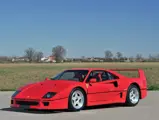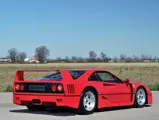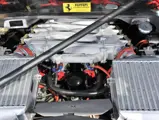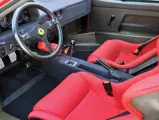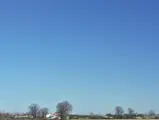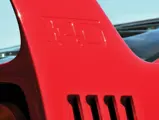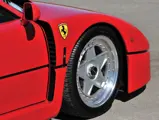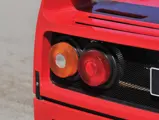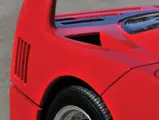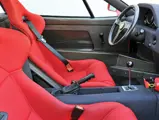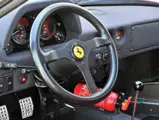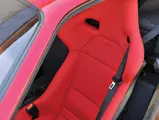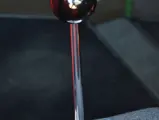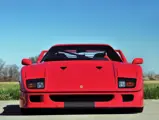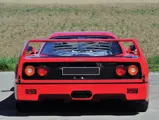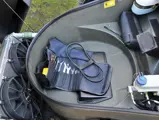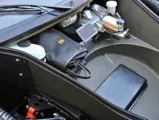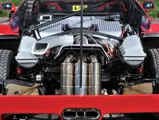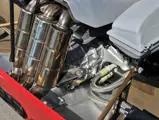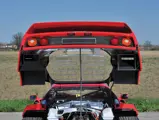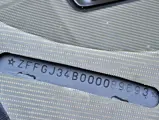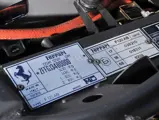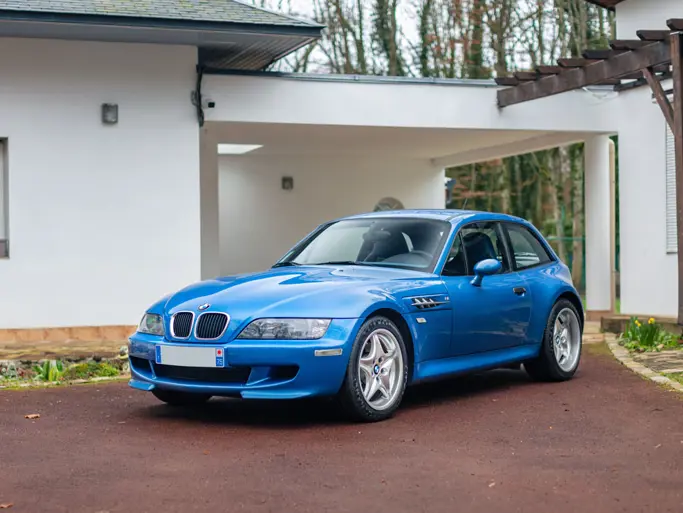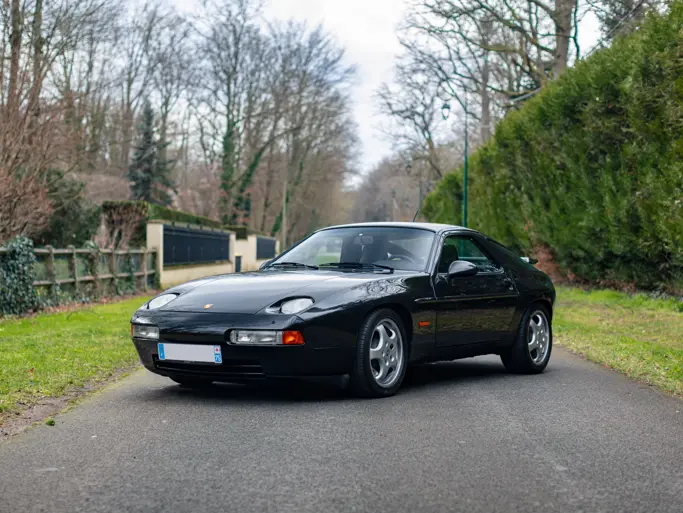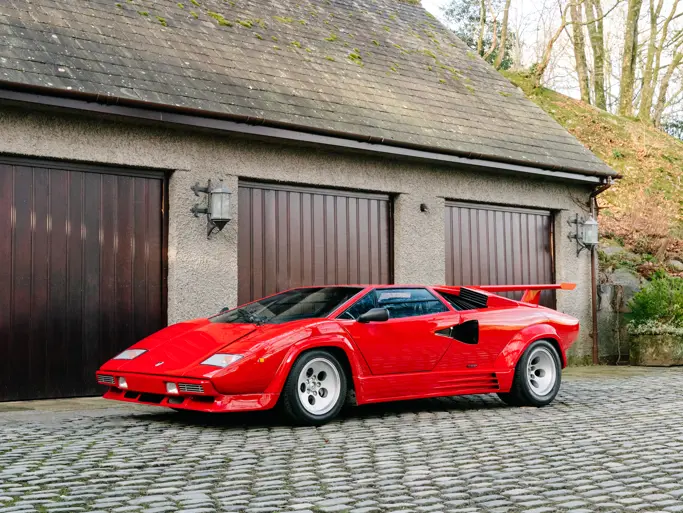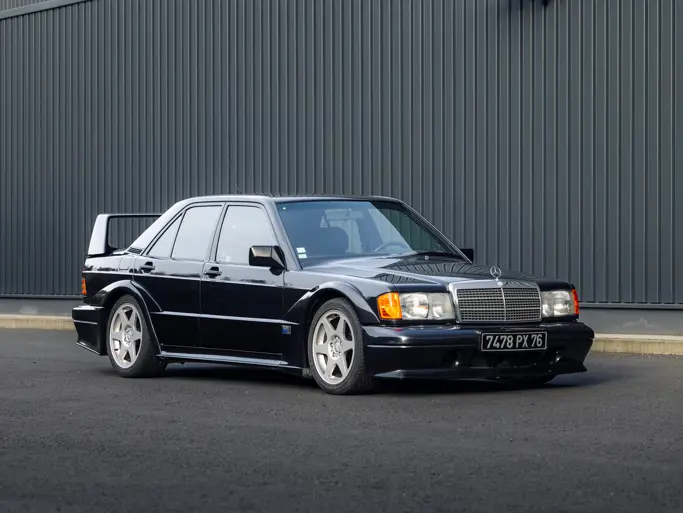Villa Erba 2015
1991 Ferrari F40
{{lr.item.text}}
€1,008,000 EUR | Sold
 | Cernobbio, Italy
| Cernobbio, Italy
{{internetCurrentBid}}
{{internetTimeLeft}}

- Recent full service by Motor Service S.r.l in Modena
- Complete with its original books and tools
- Undergoing Ferrari Classiche certification
- Tagliando completo, recentemente effettuato presso la Motor Service S.r.l di Modena
- Completa dei libretti uso e manutenzione e del kit attrezzi originali
- In fase di certificazione Ferrari Classiche
478 bhp, 2,936 cc DOHC 90-degree V-8 engine with two turbochargers and Weber-Marelli engine management and fuel injection, five-speed manual gearbox, tubular steel and carbon-composite chassis, independent double-wishbone suspension with Koni hydraulic shock absorbers and front and rear anti-roll bars, and four-wheel steel ventilated disc brakes. Wheelbase: 2,450 mm
478 cv, 2.936 cc motore V-8 di 90° con doppio albero a camme in testa, doppio turbocompressore, con iniezione elettronica e sistema di gestione del motore Weber-Marelli, cambio a 5 rapporti, telaio tubolare in acciaio con inserti in fibra di carbonio, sospensioni a ruote indipendenti con doppi quadrilateri, ammortizzatori idraulici Koni e barre antirollio sia anteriori sia posteriori, 4 freni a disco in acciaio auto ventilati. Passo: 2.450 mm
“THE BEST-EVER FERRARI”
Nineteen eighty-seven was a big year for Enzo Ferrari. Not only did he celebrate his 90th birthday, but more importantly to him, it was 40 years since he built his first car. A year earlier, Enzo was reported to have said: “Let’s make something special for next year’s celebrations, in the way we used to do it”.
That special car was the F40, and it would be the last one that “The Grand Old Man”, as he was affectionately known, would see launched from the legendary company he had created.
At that time, Ferrari was engaged in an all-out war with arch-rivals Lamborghini and Porsche. Lamborghini’s Countach had taken the world by storm, with its radical styling and record-breaking performance, and it became the ultimate poster car for a whole generation. Not to be outdone, Porsche introduced the superb 959 in 1986. The car was laden with a host of technological firsts and was capable of an unbelievable 197 mph, making it the world’s fastest road car.
Never one to be bested by his rivals, “Il Commendatore” did not sit idly by and let Lamborghini and Porsche have the last word. His response would be emphatic, describing the car as “the best Ferrari ever”.
The name for this new car had been suggested by a friend of Ferrari’s, Gino Rancati, who was at Ferrari’s office for a meeting with Razelli, the general manager. Razelli had shown him the new Ferrari, which was to be unveiled at the Frankfurt Motor Show. Rancati asked what it would be called, and Razelli replied that they had two or three possible names but wondered what he would call it. Rancati replied: “Since Ferrari’s biggest market is the United States, and since it is now 40 years since the first Ferrari car has appeared, it should have an English-language name, for example ‘Ferrari Forty’”.
Rancati received a silver plaque with the inscription: “To Gino Rancati, for a brilliant idea”. On the left was a black Cavallino Rampante and on the right “F40 June 1987”. An accompanying letter said: “Dear Rancati, with this plaque I want to commemorate our meeting on the 4th June, when you kindly contributed to the choice of name for the GT car we presented at the Frankfurt Motor Show. Your contribution has produced excellent results—the ‘F Forty’, based on the idea of 40 years of Ferrari cars, identifies and personalises the fastest Ferrari GT. Kindest regards, G.B. Razelli”. Next to this, in slightly shaky script and violet ink, was “To Signor Gino, Ferrari”.
Mechanically, the F40 bore much in common with the 288 GTO, and it was, in fact, closely based on the 288 GTO Evoluzione, which was a race version of the GTO. The F40’s engine was also based on the 288 GTO’s twin-turbocharged V-8, which was bored to displace almost three litres. When this displacement was combined with additional tuning, the car’s output exceeded 478 horsepower, making the F40 Ferrari’s most powerful road car to date. Ferrari’s riposte to the Lamborghini Countach and the Porsche 959 was to create the first production car to break the mythical 200-mph barrier, and the F40 did just that, as it was capable of reaching a top speed of 201.4 mph.
THIS FERRARI FORTY
This F40 was produced in May 1991 and originally sold in Italy by Crepaldi Autos, of Milan, to Mr Pietro Brigato, of Grumolo delle Abbadesse, Vicenza. It was first registered through his company, Old Cars S.r.l. The F40 was then offered for sale in November 1991, showing only 625 kilometres on its odometer. The Ferrari was bought by a resident of Fürstenfeldbruck, Germany, and then, on 4 June 1992, it was taken to Garage S&T in Munich for its first service. Later that year, the car returned to the shop for another service, this time with 5,834 kilometres on the odometer. The F40 was regularly maintained by S&T, receiving four additional services up until April 2002. Its next service was at Eberlein Automobile, another Ferrari dealer in Kessel, Germany, where it was noted that the cam belts were changed at 34,229 kilometres. In 2008, the car received another cam belt service, this time at Ch. Pozzi S.A.R.L. in France.
The car, a later model in the production run, which ended in 1992, comes with catalytic converters and adjustable suspension and is now presented with less than 41,000 kilometres. It has been submitted for Ferrari Classiche certification and has recently received a full service at Motor Service S.r.l in Modena, which included the installation of new cam belts and a new set of Pirelli P Zero tyres, fuel tank, suspension, and brake rebuilds, and an engine calibration. This F40 also retains its original manual, tools, and a spare set of keys.
With the added distinction of the last Maranello road car to be engineered under Enzo Ferrari’s direct leadership, the F40 remains one of the most celebrated high-performance supercars ever built, and this example is certainly one of the best.
“LA MIGLIOR FERRARI DI SEMPRE”
Il millenovecento ottanta sette è stato un anno importante per Enzo Ferrari. Non solo compiva 90 anni, ma, cosa per lui ancora più importante, celebrava i 40 anni da quando aveva realizzato la sua prima auto vettura. Un anno prima aveva detto: “Realizziamo qualcosa di speciale per le celebrazioni del prossimo anno, come usavamo fare in passato”.
La “macchina speciale” sarebbe stata la F40, e sarebbe stata l’ultima che “Il grande Vecchio” come era affettuosamente chiamato, avrebbe visto presentata dalla leggendaria azienda che lui stesso aveva creato.
Al tempo Ferrari combatteva una Guerra aperta con i suoi arci rivali Lamborghini e Porsche. La Lamborghini Countach aveva sorpreso il mondo, con il suo design estremo e le prestazioni da record, diventando la vettura nel poster appeso in camera di un’intera generazione. Non da meno era stata Porsche, che aveva presentato, nel 1986, la sua superba 959. La macchina era farcita di tecnologia innovativa, mai vista prima su un’autovettura, e capace di raggiungere l’incredibile velocità di 315 km/h, rendendola, di fatto, la macchina di serie più veloce del mondo.
Tipo da non accettare mai di essere surclassato dagli altri, “Il Commendatore” non si è seduto lasciando a Porsche e Lamborghini l’ultima parola. La sua risposta sarebbe stata energica, per quella che lui avrebbe nominato “la miglior Ferrari di sempre”.
Il nome per il nuovo modello era stato suggerito a Ferrari dal suo amico Gino Rancati, presente nell’ufficio di Ferrari durante un suo incontro con il general manager della casa, Razelli. Razelli gli aveva mostrato la nuova vettura, pronta per essere presentata al prossimo Salone di Francoforte. Fu Rancati a chiedere come sarebbe stata chiamata e Razelli rispose che stavano valutando due o tre possibilità, ma si chiedeva come lui, Rancati, l’avrebbe chiamata. La risposta di Rancati fu chiarissima: “Siccome il mercato più importante per la Ferrari è quello americano, e la nuova macchina celebra i 40 anni dalla prima vettura prodotta dalla casa, dovrebbe avere un nome di origine inglese, qualcosa come Ferrari Forty (quaranta in inglese ndt)”.
Rancati avrebbe in seguito ricevuto una targa in argento, con inciso: “A Gino Rancati, per una brillante idea” e, sulla sinistra un Cavallino Rampante nero, e, sulla destra, “F40 Giugno 1987”. La lettera che l’accompagnava, riportava: “Caro Rancati, con questa targa vorrei celebrare il nostro incontro del 4 Giugno scorso quando lei ha, molto cortesemente, contribuito alla scelta del nome della nostra ultima GT, che abbiamo presentato al recente Salone di Francoforte. Il suo contributo ha prodotto un eccellente risultato. L’‘F-Forty’, basato sull’idea dei 40 anni di automobili Ferrari, identifica e contraddistingue la più veloce delle GT Ferrari. I miei migliori saluti, G.B. Razelli”. Di fianco, con calligrafia leggermente tremolante, scritto con inchiostro viola, “Al Signor Gino, Ferrari”.
Meccanicamente l’F40 aveva tantissimo in comune con la 288 GTO, ed era, infatti, strettamente derivata dalla 288 GTO Evoluzione, con il suo V-8 con doppio turbo compressore, rialesato per raggiungere i 3 litri di cubatura. La crescita della cilindrata, abbinata alla miglior preparazione del motore, aveva portato la potenza del motore a superare i 478 cv, rendendo l’F40 la Ferrari stradale più potente mai prodotta. La risposta di Ferrari alla Lamborghini Countach ed alla Porsche 959 aveva creato la prima vettura stradale capace di superare la barriera dei 320 Km orari. L’F40 non si fermava a quello, visto che era capace di raggiungere i 322 chilometri orari di velocità massima.
QUESTA FERRARI F40
Prodotta nel Maggio del 1991, questa F40 è stata venduta attraverso la Concessionaria Ferrari di Milano, Crepaldi Automobili, al Sig. Pietro Brigato di Grumolo delle Abbadesse, in provincia di Vicenza che l’ha intestata alla sua società, la Old Cars srl. Rimessa in vendita nel Novembre del 1991, la F40 riportava nel suo contachilometri solo 625 chilometri. Comprata da un tedesco, residente a Fürstenfeldbruck, il 4 Giugno del 1992 è stata portata al Garage S&T di Monaco di Baviera per il suo primo tagliando. Nel corso dello stesso 1992, la macchina ha fatto un altro tagliando, sempre presso lo stesso garage, quando il contachilometri riportava la distanza di 5.834. Mantenuta con regolare precisione dalla S&T l’F40 ha ricevuto altri 4 tagliandi fino all’Aprile del 2002. L’intervento successivo è stato presso il garage Eberlein Automobile, un altro concessionario ufficiale Ferrari, nella città di Kessel, sempre in Germania, dove è stato anche annotato il cambio delle cinghie a 34.229 chilometri. Nel 2008 la macchina ha nuovamente cambiato le cinghie, in Francia, presso la concessionaria Ch. Pozzi S.A.R.L.
La vettura, costruita verso la fine della produzione, che terminerà nel 1992, è dotata dei catalizzatori di scarico e delle sospensioni anteriori regolabili in altezza ed ha percorso, ad oggi, poco meno di 41.000 chilometri. E’ in corso la certificazione Ferrari Classiche e, recentemente, ha ricevuto un tagliando completo presso la Motor Service S.r.l di Modena, dove sono state cambiate le cinghie di distribuzione, messi nuovi pneumatici Pirelli P Zero, un set di nuovi serbatoi, ed è stata effettuata la revisione completa dell’apparato frenante, di tutta la ciclistica, e la registrazione del motore (carburazione, accensione, e pressione turbo). Questa F40, inoltre, ha ancora i suoi manuali originali, il kit attrezzi ed il secondo set di chiavi.
Con il “plus” di essere l’ultima vettura stradale di Maranello sviluppata sotto l’egida di Enzo Ferrari in persona, l’F40 rimane una delle più celebrate supercar ad alte prestazioni mai prodotte e, certamente, questo esemplare è uno dei migliori rappresentanti di questa serie.

